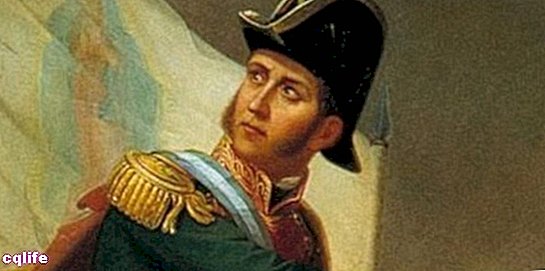- Who are the Liberals and the Conservatives?
- Origin of liberals and conservatives
- Liberal ideas
- Conservative ideas
- Neoliberalism
We explain who the Liberals and Conservatives are, their ideas and their origins. Also, what is neoliberalism.

Who are the Liberals and the Conservatives?
Liberals are those who adhere to the political-economic philosophy of the liberalism, and conservatives who follow the doctrine of conservatism. But what is understood by one and the other has varied throughout the history, so that they are not categories that can be used universally, but necessarily operate within a certain context.
Generally speaking, liberalism is a doctrine defense of freedoms individuals, especially in front of Condition. Therefore, it promotes the need to restrict powers of the latter, allowing the free market to act on its own. Under that same banner very diverse political movements coexisted and still coexist, but their point of origin is found in the ideas of the Illustration 18th century French.
On the other hand, conservatism is the political position that demands the greatest possible respect for the traditions, especially to traditional values (family and religious), in frank opposition to progressivism, that is, to the idea that values of the society they must change over time. Thus, broadly speaking, those who oppose the change in any of its facets.
Contrary to what is often understood, these are not absolute and total positions, like a religious creed. A person may or may not be a Christian, but he cannot be more Christian or less Christian than another; On the other hand, a person can be liberal in some matters and conservative in others, so much so that today there are positions that we can call "intermediate":
- Conservative liberalism, which embraces the economic proposals of liberalism, but not the social ones;
- Liberal conservatism, which also promotes liberal faith in the free market, but also demands a strong state to enforce traditional values.
Therefore, the epithets of "liberal" or "conservative" do not usually define more than general, broad political tendencies, like someone pointing to the cardinal points. Therefore, when using them, it is always advisable to handle the specific context in which they make sense.
Origin of liberals and conservatives
The terms "liberal" and "conservative" began to be used in the 19th century. This distinction was important in the young nations Hispano-American women, who now had to decide their fate on their own, after having achieved independence from Spain.
In this context, the liberal sectors, inheritors of the French culture born in the ideals of the Revolution of 1789 ("Liberty, equality, fraternity ”), proposed the construction of a republican bourgeois society, which would move away from the economic and social model of colonial times and allow new social values, such as freedom of worship or freedom of religion. freedom of expression.
To achieve these goals, liberals argued that a decentralized state, reduced to its bare minimum, was essential, leaving economic affairs to the free market.
While on the opposite sidewalk, the conservative sectors proposed a nation model more attached to the Spanish traditions that had existed in the past. They sought to be more linked to their social and religious heritage, and more generally given to a strong, protectionist state model that exercised power in a centralized way, and that maintained the privileges of the powerful classes.
In very general lines, the liberals triumphed in this fight, either because they won the bloody wars civilians that arose from it, or because the conservatives themselves ended up embracing many of the liberal precepts, especially the economic ones. However, the degree of liberalization of Latin American societies could not be more uneven, even today.
Liberal ideas

As we have said, there is no single liberalism, nor a universally valid liberal doctrine on all matters. So, roughly, we can synthesize the ideas of liberalism in:
- Economic freedom: restriction of the powers of the State to intervene in the economy, leaving the free market (that is, the offer and the demand) regulate the commercial and economic transactions of the company. This translates into the elimination of tariffs, barriers and limitations to the Commerce, as well as in the defense of the private property.
- Political freedom: abolition of monarchy and in all forms of government aristocratic, to advance towards a democratic and republican society. This also passed through an egalitarian legal condition, alien to the divine right of kings, to noble titles, and that considered everyone as an equal before the law (the Rule of law).
- Religious freedom: construction of a secular State, in which the Church constitutes a separate entity and without political powers, eliminating the confessional status of the State and the privileges of the clerical class, the education religious, and establishing freedom of worship.
- Social freedom: the non-interference of the State in the private affairs of citizens, like their social relationships and their political affiliations, thus guaranteeing freedom of expression, association, free exercise of sexuality, and even the non-regulation of marriage by the state.
Conservative ideas
As with liberal ideas, it is impossible to define a universally valid set of ideas to describe a conservative position, especially in contemporary times when the vast majority of conservative sectors are, at the same time, economically liberal. Therefore, we can summarize the conservative ideology from three main positions:
- Traditional conservatism. This conservatism views with skepticism any proposal for change, radical or progressive, and adheres socially and economically to traditional values: religion as guarantor of the moral, the family conventional as a pillar of society, and traditional educational systems, and the free market. They may even look favorably on the remnants of the aristocracy and nobility, although they do not therefore pursue the return of the monarchy. absolutist.
- Nationalist conservatism. This conservative aspect is based on the need to defend the country from any foreign threat or unfair competition, and therefore promotes the economic doctrines of protectionism: tariffs, quotas, intervention of a strong State in favor of the bourgeoisies local. They are defenders of the need for borders, and associate the protection of the social status quo with the defense of the homeland.
- Liberal conservatism. Promoters of economic liberalization and privatization, they are in favor of technocratic government, that is, in the hands of academic professionals, and of meritocracy, that is, of the belief that society operates on the basis of individual merit. The State, in its vision of society, is there to guarantee the values of Justice and sense of duty and responsibility towards the nation, and the rest must be in the hands of the market. From this trend arose what in Latin America it is understood as Neoliberalism.
Neoliberalism
The term "neoliberalism" (also called "New Liberalism" or "Technocratic Liberalism") emerged between the 1970s and 1980s, to designate a new current of economic thought that emerged in the West, particularly in the Great Britain of Margaret Thatcher and the Ronald Reagan's United States.
This model took up, after decades of the Keynesian model, the principles of non-state intervention of classical liberalism, implemented through privatization and the rapid shrinking of the state and public spending. This doctrine has been highly criticized, especially from progressive sectors, which makes it responsible for the brutal impoverishment of many countries of the so-called Third World in the final decade of the 20th century.
